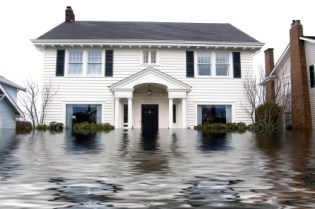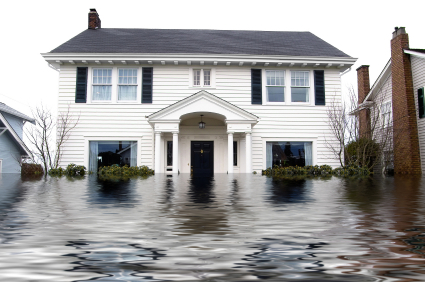 Will your home be underwater in 2030 — not your mortgage, but the house itself? If you live anywhere near a coast, that’s a question you might want to start taking seriously. Nearly 5 million people across the United States live close enough to the high-tide line to be in danger if climate change causes sea levels to rise at least four feet, according to a new report by Climate Central.
Will your home be underwater in 2030 — not your mortgage, but the house itself? If you live anywhere near a coast, that’s a question you might want to start taking seriously. Nearly 5 million people across the United States live close enough to the high-tide line to be in danger if climate change causes sea levels to rise at least four feet, according to a new report by Climate Central.
The report, called “Surging Seas,” is the first analysis of rising sea levels that includes estimates of land, population, and housing at risk in every low-lying coastal area of the country, and it comes with an interactive map that illustrates the threat. Type in your city or zip code, and you can adjust the water level on the map to see how many acres, people, and homes would be affected if sea level rose anywhere between one and 10 feet above the high-tide line.
What you’ll see is pretty scary. Even modest amounts of sea-level rise, when combined with tides and storm surges, could make once-rare floods much more common. The sea has already risen eight inches globally in the last century, and scientists expect it to rise 20 to 80 more inches before 2100. Even mid-range projections — about a four-foot rise — would put about 15 percent of the population in Miami at risk of severe floods, and threaten a whopping 87 percent of New Orleans residents (like they haven’t already learned the hard way how at-risk they are). In 285 municipalities, the report found, more than half the population lives below that four-foot mark.
Given that scientists tend to revise their climate-change predictions in ever more dire directions, it would be wise to look at the worst-case scenario for disaster-planning purposes. A seven-foot sea-level rise would theoretically affect 5.7 percent of New York City’s population, and, from what the map shows, could lead to floods that would submerge the perimeter of Manhattan, and much of Hoboken and Bayonne, N.J. With a seven-foot rise, New Orleans would be a total goner.
Those are projections for what could happen by 2100 — not too far away to plan for, of course, but the report gives reason for immediate action, too. In two-thirds of the locations it analyzed, climate change more than doubles the odds of 100-year-scale floods occurring in the next 18 years. Here at Grist HQ in Washington state, continuing sea-level rise means a 65 percent chance of a 100-year flood occurring by 2030. That’s enough to make me want to start stockpiling sandbags and brushing up on my rowing skills.
Obviously, cities and states need to start preparing for these increased disaster threats. But the report points out that structures like levees and seawalls, built to keep water out, can also keep it in once it arrives, leading to even more destruction. And as long as climate change continues unabated, the rate at which sea level is rising will keep accelerating. If we want to prevent — and not just plan for — disasters, we need to get serious about climate change mitigation — yesterday.
For more, check out:
- Surging Seas website
- “Rising Sea Levels Seen as Threat to Coastal U.S.,” The New York Times
- “Study: 5 million face increased flooding risk,” CNN
- “More of US at risk due to warming-fueled sea-level rise,” Associated Press
Editor’s note: Climate Central COO Ben Strauss serves on Grist’s board of directors.



